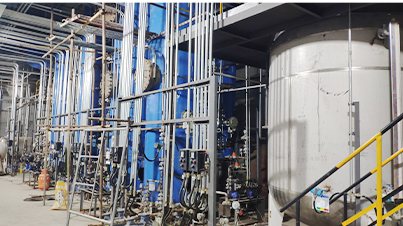diethylene triamine penta
Understanding Diethylene Triamine Pentaacetic Acid Applications and Benefits
Diethylene triamine pentaacetic acid (DTPA) is a versatile chelating agent widely used in various industrial and scientific applications. With its ability to form stable complexes with metal ions, DTPA plays a crucial role in fields such as agriculture, medicine, and environmental science. Understanding its structure, properties, and applications provides insight into why it has become an essential compound in various sectors.
Understanding Diethylene Triamine Pentaacetic Acid Applications and Benefits
One of the primary applications of DTPA is in the agricultural sector, where it is used as a micronutrient chelator. By forming complexes with essential micronutrients like iron, zinc, and manganese, DTPA enhances nutrient availability to plants. This is particularly important in alkaline soils, where these nutrients may be locked up and unavailable for plant uptake. The use of DTPA in fertilizers not only improves crop yield but also promotes healthier plant growth, leading to increased food production.
diethylene triamine penta

In the medical field, DTPA is employed in diagnostic imaging and radiopharmaceuticals. It is used as a chelator for radioactive isotopes, facilitating their transport in the body for imaging purposes. For example, DTPA can be combined with technetium-99m, a widely used radioactive tracer in nuclear medicine, to create imaging agents that help visualize internal organs and diagnose various conditions. Moreover, DTPA is utilized in chelation therapy for individuals with heavy metal poisoning, helping to remove harmful metals from the body effectively.
Environmental applications of DTPA are also noteworthy. It is used in the remediation of contaminated soils and water bodies, helping to extract heavy metals from the environment. DTPA-laced solutions can be applied to affected areas, where the agent binds to pollutants and facilitates their removal, either through stabilization or extraction processes. This application is particularly beneficial in addressing industrial pollution and restoring contaminated sites to safe levels.
Despite its many advantages, it is essential to use DTPA responsibly, as excessive application can lead to long-term environmental persistence and potential disruption of soil chemistry. Continuous research and monitoring are needed to ensure its safe use.
In conclusion, diethylene triamine pentaacetic acid is a powerful chelating agent with significant applications across various domains. Its ability to bind metal ions not only enhances agricultural productivity but also contributes to medical diagnostics and environmental remediation. As industries continue to address pollution and optimize nutrient use, the role of DTPA remains vital in promoting sustainable practices. Understanding and harnessing the full potential of DTPA can lead to significant benefits for agriculture, health, and environmental conservation.
-
Water Treatment with Flocculant Water TreatmentNewsJun.12,2025
-
Polymaleic AnhydrideNewsJun.12,2025
-
Polyaspartic AcidNewsJun.12,2025
-
Enhance Industrial Processes with IsothiazolinonesNewsJun.12,2025
-
Enhance Industrial Processes with PBTCA SolutionsNewsJun.12,2025
-
Dodecyldimethylbenzylammonium Chloride SolutionsNewsJun.12,2025





